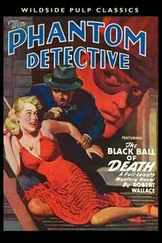London seems to have grown more rapidly and more consistently than any of its rivals. Though the city was not included in the Domesday Book, at that time it probably had some fifteen or sixteen thousand inhabitants. By early in the thirteenth century, Professor Russell calculated, this figure must have doubled and, by 1348, doubled again to a population of some sixty thousand within the city wall. {286} The immediately outlying villages, integrated with the city in many ways and certainly part of the same unit from the point of view of the spread of the plague, must have added another ten or fifteen thousand to the total.
It would be inappropriate, in a book of this scope, to attempt any profound or detailed analysis of day-to-day life in a medieval city. Nevertheless there is much about the state of London, as for that matter about Paris or Florence, which is directly relevant to any study of the plague, since there were certain built-in features in the Londoner’s pattern of life which contributed directly to its successful spread. Perhaps the most relevant of these was the overcrowding. Privacy was not a concept close to the heart of medieval man and even in the grandest castle life was conducted in a perpetual crowd. Hoccleve writes of an earl and countess, their daughter and their daughter’s governess who all slept in the same room. It would not be in the least surprising to know that they slept in the same bed as well if, indeed, there was a bed. In the houses of the poor, where beds were an unheard of luxury, it would not have been exceptional to find a dozen people sleeping on the floor of the same room. In the country villages, indeed in many urban houses as well, pigs and chickens and perhaps even ponies, cows and sheep, would share the common residence. Even if people had realized that such a step was desirable it would have been physically impossible to isolate the sick. The surprise is not how many households were totally wiped out but, rather, in how many cases some at least of the inhabitants survived.
The dirt and inadequate sanitation of these hovels was, strictly speaking, less relevant to the spread of the Black Death. No one was going to become infected with bubonic plague by drinking tainted water or breathing foetid air. But, equally, it is true that the plague found its work easier in bodies weakened by dysentery, diarrhoea or the thousand natural shocks that the unclean body is particularly heir to. Still more important; warmth and dirt provide the ideal environment for the rat. The eventual victory of the brown rat over the plague-bearing black rat was in part due to the physical superiority of the former, but, at least as important, was a tribute to the rise in the standard of living and the substitution of brick for clay and wood which deprived the black rat of his sustenance and favourite way of life. The medieval house might have been built to specifications approved by a rodent council as eminently suitable for the rat’s enjoyment of a healthy and care-free life.
What one might call the cinematic image of a medieval town is well known. Lanes barely wide enough to allow two ponies to pass meander between the steep walls of houses which grow together at the top, so as almost to blot out the light of day. The lanes themselves – they seem indeed more drains than lanes – are deep in mud and filth; no doubt to be attributed to the myriad buxom servant-wenches who appear at the upper windows and empty chamber pots filled with excrement on the passers-by. No street corner is without the body of a dead donkey and a beggar exhibiting his gruesome sores and deformities to the charitable citizens. Clearly one is in a society where hygiene counts for nothing and no town council would waste its time supervising the cleaning of streets or the emptying of cesspools.
The picture, though of course over-drawn, is not entirely false. A medieval city, by modern standards, would seem a pretty filthy and smelly spot. But it would be unfair to suggest that citizens and rulers were indifferent to the nuisance or did nothing to remedy it. Thanks to the researches of Mr E. L. Sabine {287} and others, we now know much about conditions in London and the activities of the mayor, aldermen and common council. Though London, as the largest city of England, had the most serious problems, so also it had the greatest resources with which to deal with them. The overall picture of London’s filth or cleanliness will be more or less valid for most of England’s towns and cities.
Sanitary equipment, it need hardly be said, was scarce and primitive. In monasteries or castles, ‘garderobes’ were relatively common. Since 1307, the Palace of Westminster boasted a pipe between the king’s lavatory and the main sewer which had been installed to carry away the filth from the royal kitchen. But this was probably unique in London; usually the privies of the aristocrats jutted out over the Thames so that their excrement would fall directly in the river or splash down the face of the castle wall. The situation was worse when the privies projected, not over a free flowing river but above a shallow stream or ditch. An inquest into the state of the Fleet Prison Ditch in 1355 revealed that, though it should have been ten feet wide and deep enough to float a boat laden with a tun of wine, it was choked by the filth from eleven latrines and three sewers. So deep was the resultant sludge that no water from Fleet Stream was flowing around the prison moat.
Occasionally citizens tried to dispose of their filth by piping it into the common drain in the centre of the street. A more ingenious technique was exposed at an Assize of Nuisances in 1347, when it was found that two men had been piping their ordure into the cellar of a neighbour. This ploy was not detected until the neighbour’s cellar began to overflow.
Normally those fortunate enough to possess a private latrine would also have their own cesspool. In theory these had to be built to certain minimum standards; placed at least two and a half feet from a neighbour’s land if they were stone-lined and three and a half feet if they were not. But there were many cases of seepage into adjoining properties and the contamination of private or public wells. Nor were these the only perils inherent in a cesspool, as the unfortunate Richard the Raker discovered when he vanished through the rotten planks of his latrine and drowned monstrously in his own excrement. Most blocks of tenement houses had their own privies though this was not invariable. But even where such facilities were lacking the chances were that there would be a public latrine not too far away.
Though sewers and cesspools were perhaps the most important of the common council’s responsibilities, they provided by no means the only field in which the authorities saw reason to intervene. The three city butcheries of St Nicholas Shambles near Friars Minors in Newgate, the Stocks Market near Walbrook and East Cheap were subject to strict regulations. The years just before the Black Death, when cattle murrain was rife in the South of England, gave rise to many such prosecutions for selling meat described as ‘putrid, rotten, stinking and abominable to the human race’. Offenders ran the risk of being placed in a pillory and having the putrid meat burnt underneath them.
The disposal of offal and other refuse was a serious problem. At the time of the Black Death the butchers of St Nicholas Shambles had been assigned a spot at Seacoal Lane near the Fleet prison where they could clean carcases and dispose of the entrails. But, under pressure from the Prior of St John of Jerusalem, the site was moved and subsequently moved again, to a choice of Stratford or Knightsbridge; both suitably remote spots outside the city wall. ‘Because’, as the royal instruction read,
by the killing of great beasts, from whose putrid blood running down the streets and the bowels cast into the Thames, the air in the city is very much corrupted and infected, whence abominable and most filthy stinks proceed, sicknesses and many other evils have happened to such as have abode in the said city, or have resorted to it; and great dangers are feared to fall out for the time to come unless remedy be presently made against it… {288}
Читать дальше












